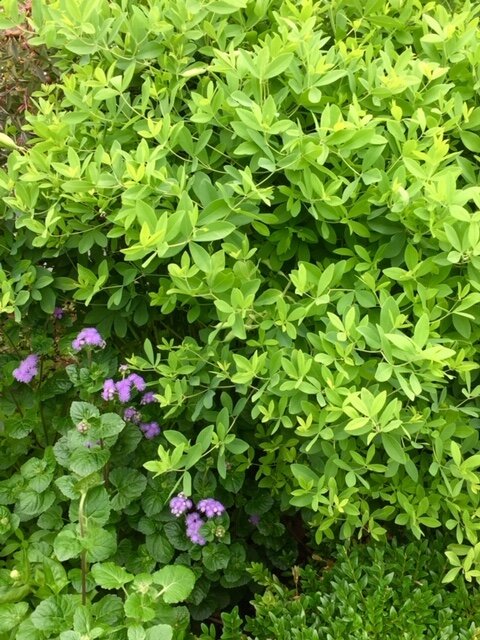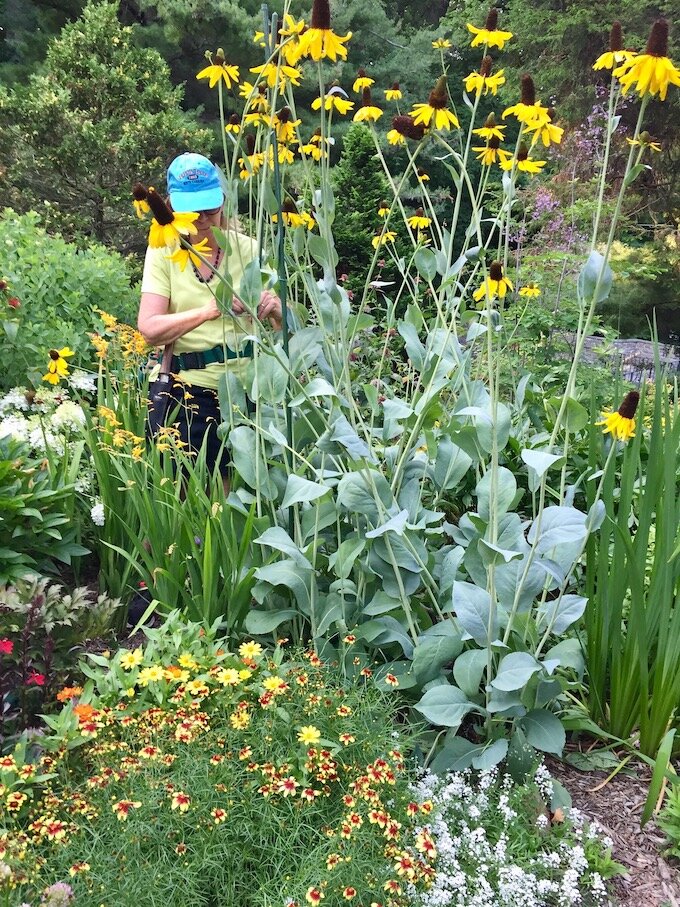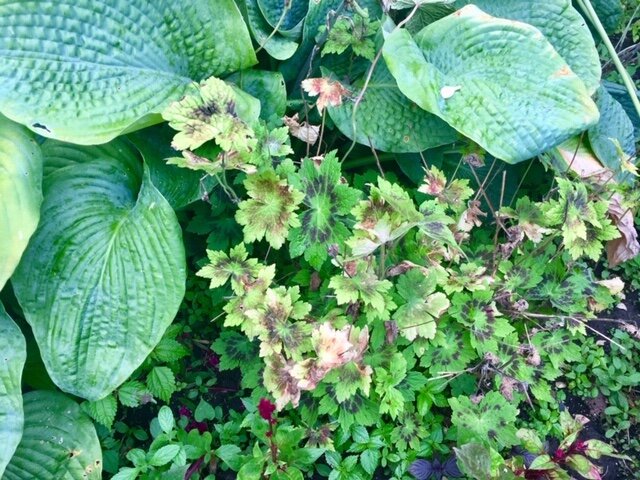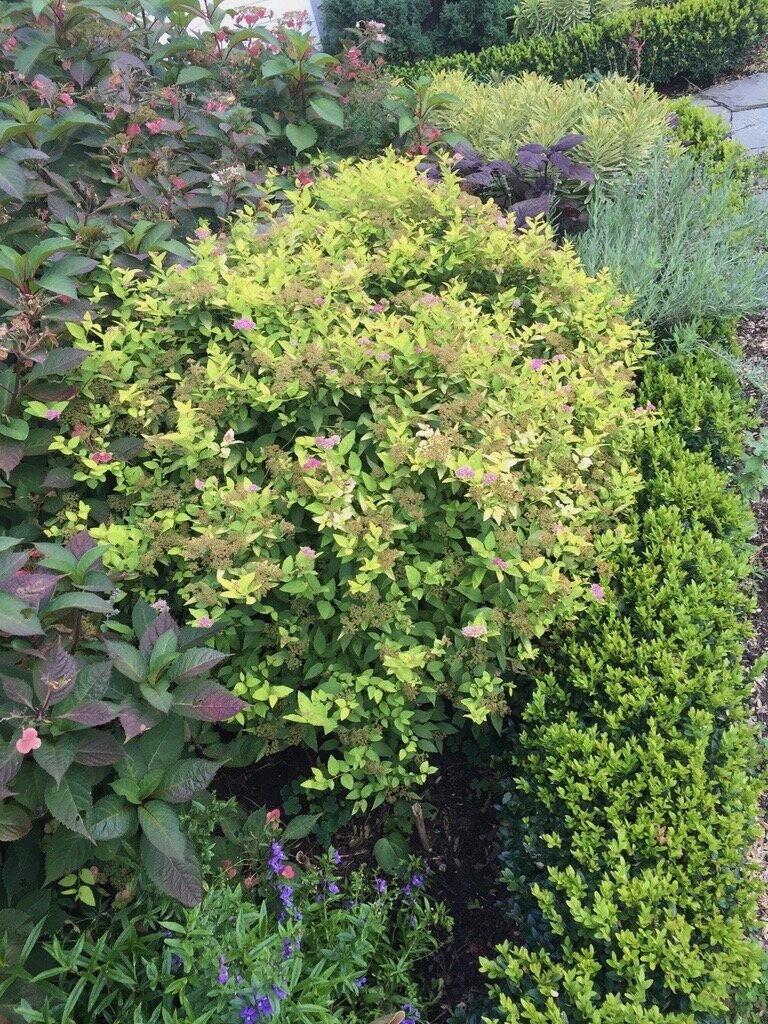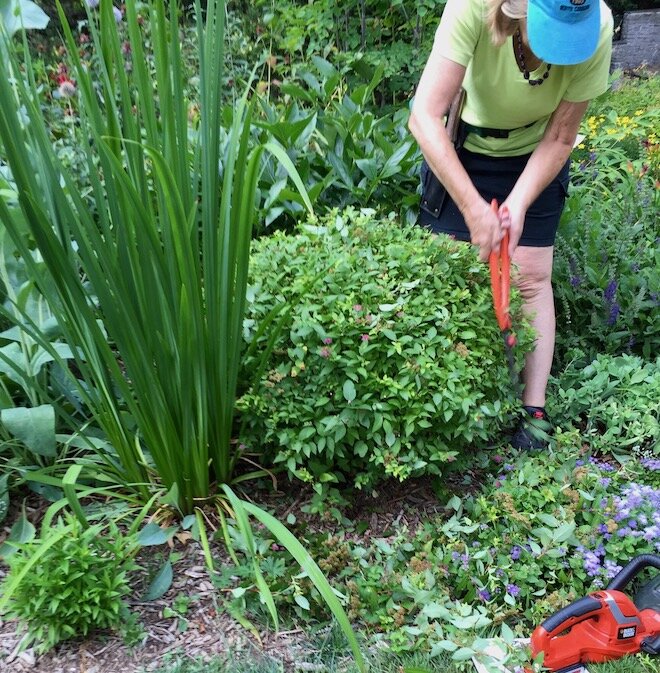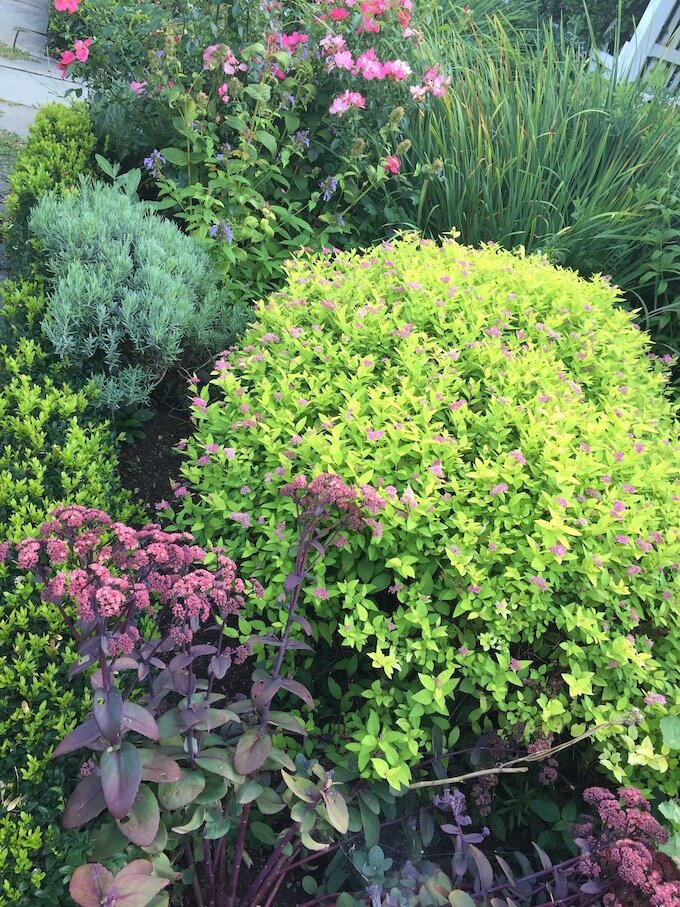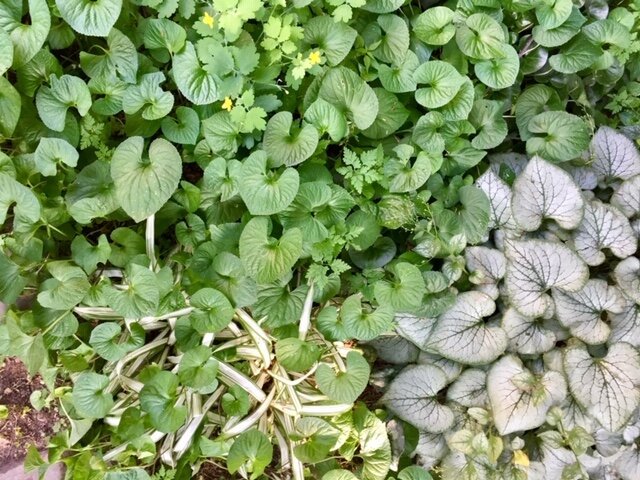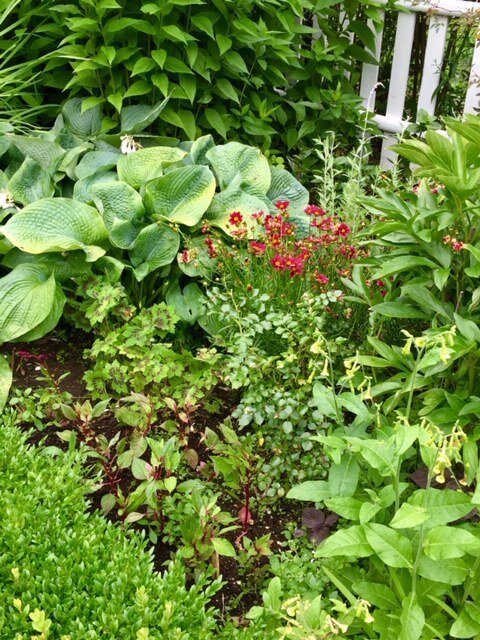Oh No, Now What? 7 Ways To Perk Up A Weary Garden
Suddenly, my garden is out of hand - and not in a good way. What was lush in June now looks overgrown, tired and sloppy. While I was settling into my weeds and water routine, a bunch of other problems reared their ugly heads. Some plants have outgrown their space by a long shot - flopping perennials, spent flowers and ratty foliage are gaining on me. Those invasive little weeds I thought I had eradicated are shooting up left and right. It's enough to drive you to drink.
There's still a lot of summer left, so I'm not about to let the garden go down the tubes. To spiff up a tired garden,you need a good plan. Roll up your sleeves, it's time to impose a little law and order.
1. Prune back foliage
A lot of people are hesitant to prune back shrubs and perennials in the summer, but I say go for it. You can't even begin to weed in a garden where plants are encroaching on one another and flopping around on the ground. It looks sloppy, and all that excess foliage will suffocate the good stuff hidden underneath.
This Baptisia is hogging all the space in these beds. I can hardly get down the path and it's covering up the annuals I planted next to them.
Those poor little Ageratums are duking it out for their place in the sun!
The Baptisia has already bloomed, so I'm not losing anything but foliage when I cut it back. It looks neater, and now I can prune the boxwood underneath it!
2. Get flopping perennials off the ground: Foliage on the ground is the worst - it looks messy and creates a home for slugs and fungal diseases. Mix that in with the weeds and you've got a real job on your hands. There are two main culprits - perennials that haven't been staked adequately and straggly plants past their prime.
Fixing perennials that need to be restaked is a total pain, but the results are worth it.
Here's how:
Use stakes that are sturdy enought to do the job. That means you need stronger, taller stakes than the ones you originally put in. Maybe more of them too. Use dark green or natural twine so it doesn't show too much. Good staking is like underwear - a necessary item that shouldn't be seen.
Start from the inside growth and work your way in, gathering foliage as you go. Do it in stages so your plant doesn't end up looking like a fat lady in a girdle. Don't be afraid to play around with it.
3. Neaten up plants past their prime: Looking at straggly plants is depressing, it makes me feel like a bad gardener. Even if a perennial or shrub isn't blooming, there are ways to make it more attractive. Your options are deadheading, deadleafing or cutting it back.
Deadheading: This refers to removing spent flowers. They take energy from the plant, removing the dead flowers will encourage new ones to bloom. If nothing else, it looks neater. Cut the flower neatly from the apex of where it meets the stem to avoid stickies - half cut stems that will turn brown and look terrible.
Deadleafing: Crispy brown leaves and insect ridden foliage don't do much for the look of any plant. If there is still enough decent foliage to work with, remove the dead leaves by hand to neaten it up. If not, your next option is to cut it back.
An easy fix requires taking the leaves off the main stem. Hollyhocks are a good example - the foliage never looks all that great, but you can improve it's appearance by removing brown and yellow leaves from the bottom.
Perennials with mounding growth habits need to be pruned back toward the center of the plant to avoid unsightly stems like this. It's a little more work, but the plant will look fresher.
Cutting back: How much you cut depends on the plant you're dealing with. Many summer blooming shrubs respond nicely to cutting them back by about a third. It's a good way to keep their size in check and freshens them up. Here's an example - the gold foliage of Spirea ' Gold Mound' fades after it flowers.
I shear it into a ball and it bounces back quickly with fresh gold growth and a second round of flowers
Many perennials look ratty after they've bloomed. Perennial geraniums, nepeta and salvias are a few that come to mind. These can be cut back hard - almost to the ground. When you cut, you will see new growth in the middle of the plant. Salvias and nepetas will give you a second bloom. Almost any straggly perennial will look better if you cut it back to the center. New foliage sprouts quickly and the plant will look much neater.
4. Weed: Once you have the cleared the garden floor you can deal with weeds that are robbing your plants of space, nutrients and moisture. Pulling them out on a regular basis makes the job easier, but honestly it often gets away from me! In my book, there is deep weeding and surface weeding. They each have their place.
Surface weeding goes fast and it's easy to do more often. Weed the edges of the beds first. If you have time, pull out any others that come out easily.
Deep weeding is harder and more time consuming. It pays to do this several times a season to get a handle on potential invasives, agressive weeds and other perennials that are getting too rambunctious. Get underneath plants, dig out deeply rooted weeds with a shovel or gardening knife and route out the ones growing in the centers. I confess that I can't always get these out by the roots but I think pulling off the top growth retards them somewhat.
5. Edit - too much of a good thing: These little violets seemed like a worthy groundcover for this woodland bed, but now they're choking out the other perennials. This is a junky plant, but even choice perennials and grasses can wind their way into neighboring plants. You have to decide which ones are going to win.
6. Fixing holes: Maybe you had to cut back a big perennial or something died and you had to pull it out. Now you've got a big hole - what can you do? One of my solutions is to replant it with annuals. In early summer, I pot up any extras in case I need them later on. If you have to buy them at a garden center, look for end of summer sales.
If you choose a perennial to fill in a hole, try to pick a late bloomer. I have no qualms about cutting back a plant and putting a pot of something better close to it, or even over it. After all, it can always be moved.
Here's a shot of my garden after I neatened it up. The annuals in the front aren't doing much and I have a big hole next to that hosta.
I bought a couple pots of Coreopsis 'Mercury Rising', tucked them in the bare spot, hiding the pots among surrounding foliage. I didn't plant them in the ground because I had a mass of tulips and aliums I didn't want to dig up. Their future real home will be the spot where the celosia (an annual) is. I'll just have to remember to keep it watered.
7. Feeding - how and why: Perennials and shrubs don't need to be fed in the summer months, but feeding can boost blooms and give straggly annuals new life. Liquid food such as Miracle Gro or an organic one like Neptunes Harvest are immediately available to the plant and give quick results. You can apply it with a watering can or a feeder attached to the hose. Make sure to do it in early morning or the end of the day to avoid burning.
In addition to keeping your garden looking good until fall, doing these mid-summer maintenance chores will help you track future issues like overcrowding, stuff that needs to be moved and divided, plants you don't really like all that much and want to get rid of, insect damage, aggressive and invasive plants. Best of all, it will help you get to the fun part - your list of what to buy next!


